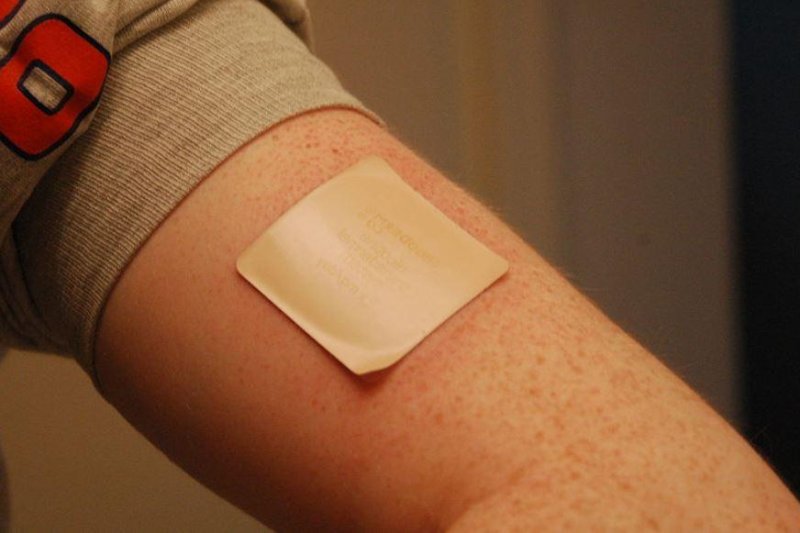Researchers found there is no sufficient evidence that that smokers who use nicotine patches four weeks before quitting will have long-term smoking abstinence. Photo courtesy of
Wikimedia Commons
June 14 (UPI) -- If smokers use nicotine patches four weeks before quitting, there is no sufficient evidence it leads to long-term smoking abstinence, according to a study.
Researchers from the United Kingdom Center for Tobacco and Alcohol Studies found the process -- known as "preloading" -- reduces craving and eases quitting but doesn't lead to non-smoking several months later. Their findings were published this week in The BMJ journal.
Smoking-cessation programs are two-fold: behavioral support for motivation to stop and drugs to reduce the urges to smoke. The most common drug is varenicline -- with brand named Chantix and Champix -- that reduce cravings for nicotine and decrease the pleasurable effects of cigarettes and other tobacco products.
"Evidence was insufficient to confidently show that nicotine preloading increases subsequent smoking abstinence," they conclude. "The beneficial effect may have been masked by a concurrent reduction in the use of varenicline in people using nicotine preloading."
Recruited in the study from 2012-15 were 1,792 nicotine-dependent adults from four cities across England -- Nottingham, Birmingham, Bristol and London -- who smoked an average of 19 cigarettes a day.
Most participants were middle aged and had lower levels of educational attainment. Half were men and a quarter were from minority ethnic groups.
One-third had used behavioral support or pharmacotherapy to try to quit in the past six months.
The participants were randomly assigned to two groups. Half received standard smoking-cessation drug therapy and behavioral support, while the other half received the same treatment plus a daily nicotine patch to use for four weeks before quit day.
At six months, 18 percent of participants who used nicotine patches ahead of time voluntarily had stopped smoking. For those who received standard therapy, it was 14 percent.
At 12 months, 14 percent of participants in the nicotine preloading group abstained compared with 11 percent with standard therapy.
They confirmed abstinence with a carbon monoxide breath test.
Three-quarters of participants used the patch daily during the first week and four-fifths did so in the subsequent weeks. Overall, 5.5 percent people prematurely discontinued preloading with most during stopping the first week.
Use of varenicline differed between those preloading -- 22 percent and the non-patch group -- 30 percent. After statistically controlling for this, researchers said there was a 4 percent difference that preloading increased the likelihood of achieving abstinence.
In addition, around 1 in 20 people experienced minor adverse events caused by nicotine preloading, such as nausea and headaches.
The researchers noted the results could have been skewed because participants knew which treatment group they are in.















